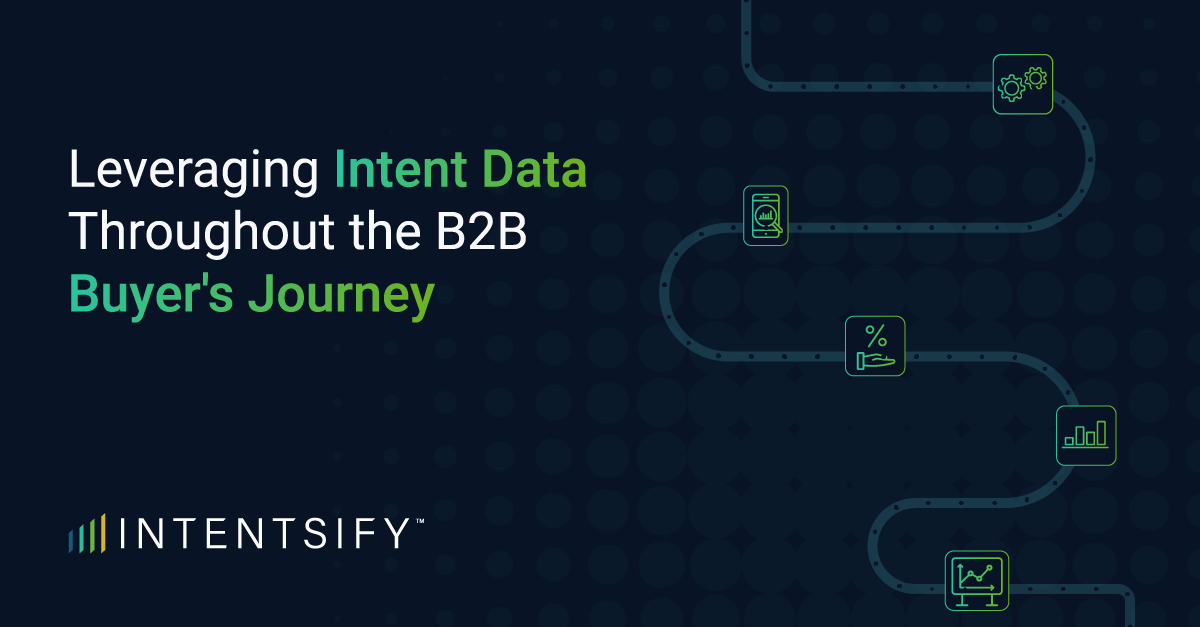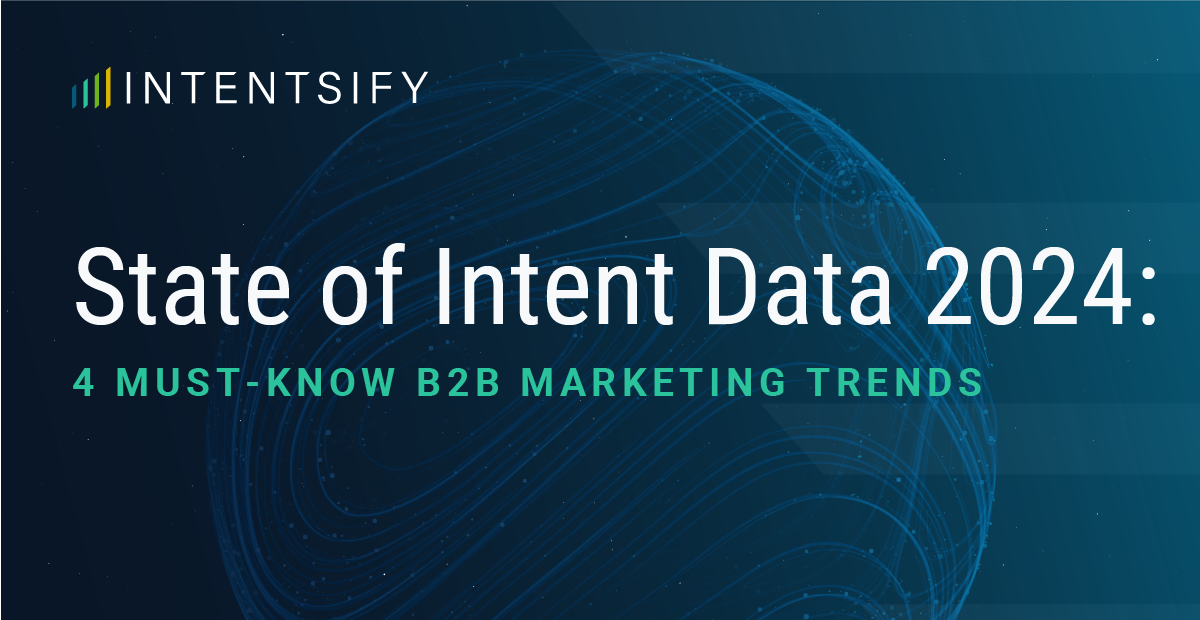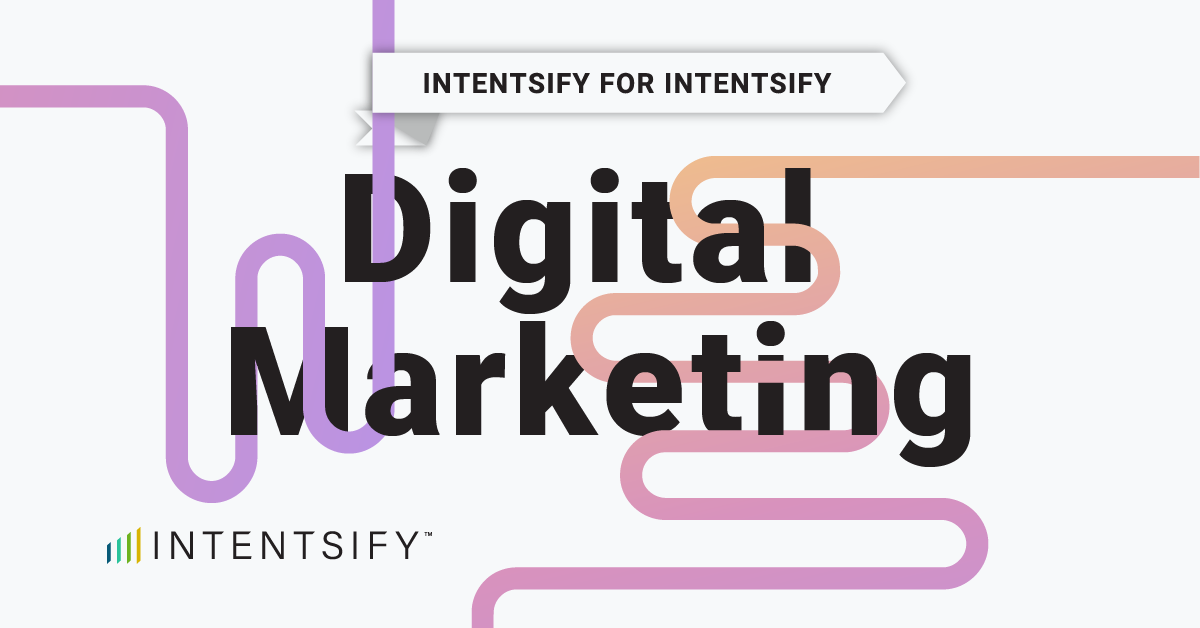In the developing landscape of B2B demand generation, creating impactful content requires a laser focus on target audiences and their specific needs. This is where intent data emerges as a game-changer, empowering marketers to tailor content strategies throughout the buyer’s journey, accelerating revenue-generation efforts in 2024 and beyond.
Understanding the Buyer’s Journey
The buyer’s journey isn’t a rigid, linear path. While the core stages – Awareness, Consideration, Decision, and Retention – provide a framework, buyers navigate them fluidly.
Note: Most intent data solutions require you to analyze the data to understand where certain buying groups are in their journey. Others, like Intentsify, use AI to surface buyer research stage and recommend next actions and/or automatically orchestrate media programs based on the evolving buying intelligence.
Here’s a breakdown of the core stages and how intent data can be harnessed at each:
Stage 1: Recognizing the Need (Awareness)
- Focus: Educate potential buyers about the underlying causes of their business challenges.
- Content: Blog posts, infographics, social media content, reports, and industry thought leadership pieces.
- Intent Data Insights:
- Identify Pain Points: Analyze intent data to understand the specific challenges your target accounts are researching. This allows you to prioritize messaging that resonates with their struggles.
- Content Gap Analysis: Identify areas where your content library lacks resources addressing these pain points. This guides content creation efforts.
- Buyer Behavior Analysis: Discover where prospects are consuming content – specific platforms and preferred formats (articles, videos, etc.) – to optimize content distribution strategies.
Step 2: Exploring Solutions (Consideration)
- Focus: Provide deeper dives into available solutions, maintaining a neutral stance.
- Content: Expand on Stage 1 formats with the addition of short ebooks, email campaigns, and webinars. Shift content focus to “how-to” solutions.
- Intent Data Insights: (In addition to Stage 1 insights)
- Buyer-Progression Tracking: Analyze changes in research activity using intent data platforms alongside your website data to prioritize accounts and tailor content specific to their evolving needs.
- Content Syndication Optimization: Leverage intent data to enable publishers to target accounts exhibiting solution-exploration behavior. This ensures you reach the right audience with the most relevant content.
- Nurture Path Personalization: Use intent data in conjunction with content downloads and website activity to personalize email nurture paths based on prospect’s overall research journey.
Stage 3: Considering Specific Products (Decision)
- Focus: Bridge the gap between marketing content and sales enablement assets, driving conversions.
- Content: Product-focused landing pages, case studies, customer testimonials, solution overviews, sales decks, and ROI calculators.
- Intent Data Insights:
- Keyword and Topic Monitoring: Monitor topics and keywords related to specific product categories, brand names, and even competitor offerings. This provides a deeper understanding of prospect intent.
- Landing Page Personalization: Tailor landing pages for specific segments or even individual accounts based on their researched product categories.
- Competitive Intelligence: Equip sales teams with insights into competitor research conducted by prioritized accounts. This allows for targeted messaging and competitive differentiation during sales interactions.
Stage 4: Deciding on Renewal or Churn (Retention)
- Focus: Nurture existing customer relationships, maximize customer lifetime value, and encourage upsells and renewals.
- Content: A mix of content types from all previous stages, along with personalized invitations to events, product updates, roadmaps, user guides, and strategic case studies showcasing customer success. Content that addresses churn concerns and emphasizes customer value is also crucial.
- Intent Data Insights:
- Churn Risk Identification: Track customer research on competitor offerings to identify accounts at risk of churn. Early detection allows for proactive intervention with targeted content and customer success outreach.
- Upsell and Cross-Sell Opportunities: Identify accounts researching solution categories you offer but haven’t yet purchased. This allows for targeted content campaigns to nurture these leads and expand account investment.
- Churn Risk Identification: Track customer research on competitor offerings to identify accounts at risk of churn. Early detection allows for proactive intervention with targeted content and customer success outreach.
Maximizing Demand Generation with Intent Data
By strategically leveraging intent data throughout the buyer’s journey, B2B marketers gain a significant edge in 2024. Key benefits include:
- Increased brand awareness and demand among target accounts.
- Improved conversion rates at each stage of the buyer’s journey.
- Reduced sales cycles through targeted content and messaging.
- Greater efficiency in content creation and marketing resource allocation.
Intent data is a powerful tool for B2B marketers, enabling a data-driven approach not just to content marketing, but demand generation in general. By incorporating the strategies outlined above, you can craft a demand generation strategy that ensures your messages resonate with target audiences at every touchpoint.







